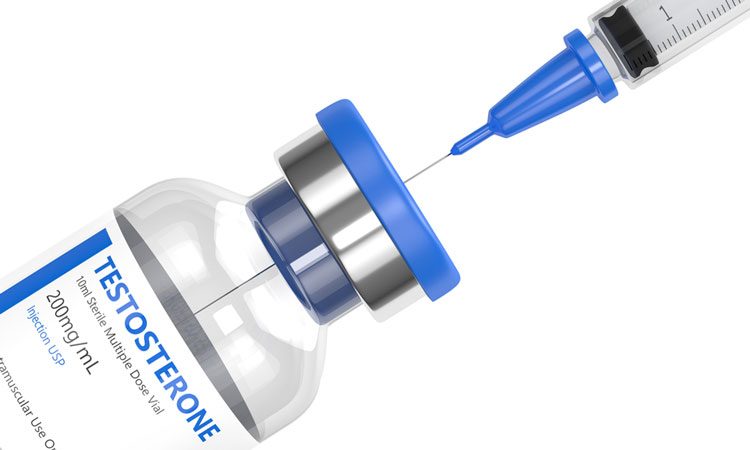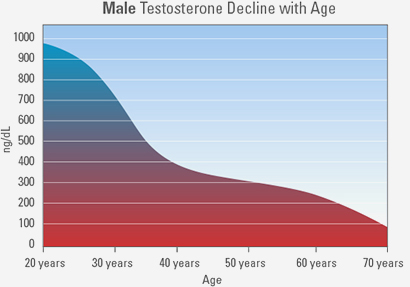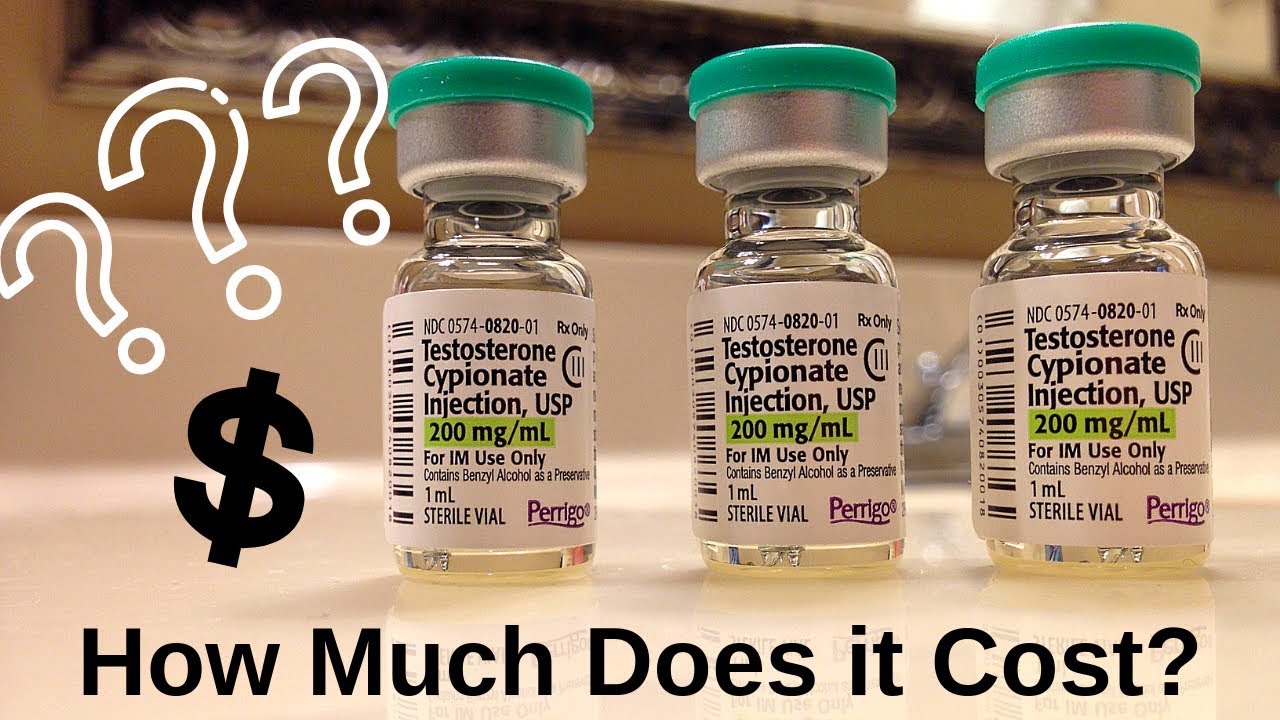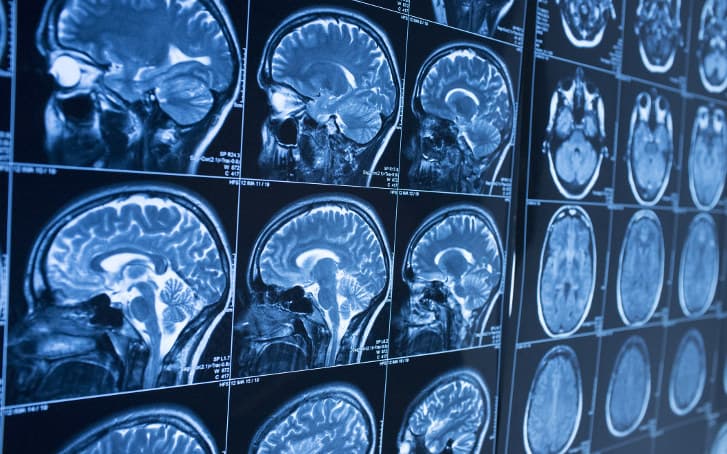What is TRT (Testosterone Replacement Therapy)?
If you have low testosterone or have heard of low testosterone before, you may know a little about TRT. TRT is an acronym that is used to describe testosterone replacement therapy. Alternatively, this is sometimes an interchangeable term with androgen replacement therapy. This type of therapy is commonly used to treat those who have low testosterone levels. Those who suffer from low testosterone often do because of age or other medical conditions.
While TRT is traditionally used to treat those with low testosterone, it is also becoming a popular elective treatment for those who want to improve sexual performance, have more energy, and build more muscle mass. There is research to support that TRT may help in achieving these goals, but there are many things to know before you start committing to the idea of using TRT for these purposes or any other purposes.
To truly know the whole story about TRT, you must first learn about the conditions and science that surround this highly popular treatment option.
Reason for Testosterone Decrease With Age
If you have heard anything about testosterone and low testosterone, you probably already know that it’s natural for testosterone to decrease with age. This is mainly because men naturally produce less testosterone as they age. On average, males can expect their testosterone production to go down about 1 or 2 percent each year as they age. This is a natural process that starts in the late 20s to early 30s and extends into your old age.
The first step of this process is the testicles begin to produce less testosterone than what is normal. The lowered testosterone in the body then causes the hypothalamus to produce fewer hormones, which are responsible for regulating many of the processes in your body. As a result, the pituitary gland also makes less hormone and this cycle comes back to lower the testosterone production in your body. This cycle repeats and causes there to be far less testosterone in the body over time.
There are a few symptoms that are also associated with this process such as low sex drive, less spontaneous erections, erectile dysfunction, lowered sperm count, fatigue, trouble with sleeping, weight gain, and loss of muscle mass.
How to Determine if You Have Low Testosterone
If you are looking to find out if you actually have low testosterone, there is really only one way to know for sure. That is to see a medical professional or healthcare provider have a testosterone level test. This test will show the current level of testosterone in your body and compare it against normal levels to tell you if you have lower than normal testosterone levels. This test is simple and easy and requires a blood sample for the test.
If you are going to get a testosterone test taken, you will need to know that there are various factors that could affect testosterone levels in your blood aside from natural aging. This includes diet, exercise, the time of day that the test is taken, and what medications you might be taking.
If your testosterone test is done and it is determined that your testosterone levels are only a little bit lower than what they would typically be for your age group, it is probably not necessary to get TRT. In these cases, a simple lifestyle change or another natural remedy may serve your purpose.
How is TRT Delivered?
The next natural question that you might have if you are considering TRT as a treatment for low testosterone or an elective procedure is how the procedure is done. The answer actually includes a couple of different methods that are used to administer the treatment. There are several different ways to conduct a TRT treatment. The best one for you will be determined with the help of your doctor but is most commonly based upon your lifestyle and other medical needs.
Here are some of the most common ways that TRT is administered:
- Topical Cream
- Patches
- Injections
- Oral Medication
- Gum Application
This wide range of potential methods helps you and your doctors determine the best course of action for your unique medical situation.
More About Treatment Methods
Here is some more, in-depth information about how TRT is delivered and how you can expect to experience TRT treatments.
Patches
Patches are one of the easiest types of treatment to apply and are highly effective, but they are not always the most convenient. You will have to apply a patch more than one time per day and they can also cause skin rashes in some patients. However, they are convenient because they don’t require injections and other operations. Patches can be applied at home or anywhere else.
Gels
Gels are treatments that are applied to the surface of the skin on a daily basis. These are also convenient and can be done at home, but you also need to be careful not to expose the portion of the skin that you applied the gel to anything in the next several hours after application. If someone touches that area, they could get testosterone in their body inadvertently. While the application is convenient. The fact that you cannot come into contact with anyone for hours afterward is not.
Buccal Patches
Thes convenient patches are patches that are applied to the upper gum twice each day. These patches are known to be one of the most convenient ways to take testosterone, but they also carry their risks. Some past users of this method report gum irritation and even gum disease. You should use this method with caution with the guidance of your medical professional or doctor.
Injections
Injections are perhaps the most popular way to administer TRT. Injections are typically given every 2-10 weeks apart. Compared to the other treatments that are available, injections are very affordable. However, the drawback to injections is that the benefits of taking testosterone via injection are not always steady. For instance, your testosterone levels right after injection will be much higher than the levels a few weeks afterward. Thus, you have to stay on a consistent schedule in order to achieve maximum benefits.
Subcutaneous Pellets
These are pellets that are inserted beneath the skin every 3 to 6 months. These pellets provide more even distribution and great benefits and are also very convenient once they are in. However, these too come with drawbacks. You will have to undergo minor surgery for each of these pellets, which is expensive, time-consuming, and taxing on the body.
TRT Medical Uses
TRT is a treatment that has traditionally been used to treat a condition called hypogonadism. This is the condition in which the testicles are not producing enough testosterone for the body. This condition doesn’t occur in every man but is also not considered necessarily uncommon. If you want to fully understand TRT, you should also understand hypogonadism and the various types.
There are two types of hypogonadism. The first is Primary Hypogonadism, which is the condition in which the low testosterone is a result of issues that are occurring within the gonads. In Primary Hypogonadism, the gonads are getting the signals from the brain, but are not able to produce enough or any testosterone.
The second type of hypogonadism is Central Hypogonadism. In this form of hypogonadism, the issues stem not from the gonads, but from the hypothalamus or pituitary gland, which each are highly responsible for the production of hormones.
Regardless of what type of hypogonadism an individual has, TRT is highly effective in helping because it helps your body contain the proper amount of testosterone that it needs for many daily functions. TRT can help to improve sexual ability, raise your sperm count, and regulate the hormone levels in your body.
TRT is an effective treatment for those who are negatively affected by their hormone levels by the following conditions:
- Sex organ surgery
- Radiation therapy
- Cancer treatment
- Undescended testicles
- Genetic disorders
- Autoimmune disorders
Elective TRT Applications
As we discussed earlier, TRT is sometimes necessary to raise the levels of testosterone in men that are experiencing a deficiency, but there are also times where TRT is elective and voluntary on the part of a man to enjoy the benefits of testosterone boosting. There are many countries that have banned the purchase of testosterone supplements for this treatment without a valid prescription. There are many people worldwide that seek out TRT treatments for reasons that don’t have to do with their testosterone health.
Here are some of the reasons that men might want to use TRT for non-medical reasons:
- Weight loss
- Increased energy
- Boost in sexual performance
- Increase endurance
- Increased athletic performance
- More muscle mass
There are many studies that show that TRT is indeed effective in achieving many of these goals. While TRT has been shown to provide these benefits for males, there are other risk factors that might make some men very hesitant to use TRT treatments. For starters, TRT will have very little benefit for younger men who have normal or higher testosterone levels. In these cases, there is not much room to improve. TRT would represent very little or no improvement at all for these men.
Additionally, TRT comes with certain legal risks. For those in a competitive sports league or professional sports league, TRT is considered “doping”, which has been outlawed in virtually every serious professional sport. If caught performing TRT to increase performance, many athletic organizations would be within their power to ban you from the league.
Cost of Testosterone Replacement Therapy
One of the main concerns that people have when exploring the possibility of TRT as a treatment for their low testosterone is how much it’s going to cost. The answer is that the cost of TRT will vary widely based on what type of TRT you are using, how long, and which clinic you are going through. It will also depend on what health insurance you have and the reason for getting your TRT. If you do have health insurance and the TRT is to treat an actual medical condition, you will pay much less than someone without health insurance who is doing TRT as an elective procedure.
Additionally, the cost of your TRT will depend on which facility you use and whether they will allow you to use a generic version of the medication you will need to take. All told, the cost of TRT can range from £20 to £1000 per month, depending on the factors listed above. As a recap, your TRT can range in cost due to the following factors:
- Location
- Medication type
- Treatment method
- Generic version
One thing to be aware of when analyzing the cost of TRT is that while TRT can boost your testosterone levels, it is not a treatment that is meant to address the actual cause of your low testosterone. If you choose not to or are not able to treat the underlying cause, you will need life-long TRT to maintain the same level of testosterone.
Testosterone Purchase Legality
It is not recommended to ever try to administer any form of TRT on yourself. In many countries, it is illegal to buy testosterone without a prescription. If you are caught buying testosterone, there will certainly be legal consequences to those actions.
Aside from being illegal, testosterone that is not bought from a pharmacy and prescribed from a doctor is also not regulated. This opens you up to certain risks that could very negatively affect your health. In many cases, this type of testosterone is mixed with other ingredients that are dangerous or won’t nearly achieve the desired effects.
If you are considering TRT, always go through a registered and trusted medical professional that has the authority to prescribe testosterone to you and administer it in a safe manner in a controlled environment.
TRT Associated Risks
To truly understand TRT and everything associated with it, you also need to know what the potential risks are when using TRT to treat low testosterone. While scientists and experts still don’t definitively know all of the risks, there are many health risks already associated with the treatment. There are even conflicting studies and reports that further complicate the matter.
As for the treatments itself, here are some of the associated side effects and potential risks that you might encounter when using TRT:
- Low sperm count
- Difficulty with speech
- Difficulty with breathing
- Chest pain
- Strokes
- Hand and leg swelling
- Heart attack
- Lowered HDL
- Enlarged prostate
- Sleep apnea
- Acne
- & more
If you are at risk for some of the most common side effects and risks, you may want to avoid TRT altogether. TRT could worsen these conditions or speed up the negative effects.
Is TRT Used To Treat Erectile Dysfunction
If you are considering TRT as a treatment for low testosterone, there is a chance that you have already experienced erectile dysfunction as a side effect of your low testosterone. Since TRT is designed to raise the levels of testosterone in your body, there is a chance that TRT can help to restore the ability to achieve and maintain an erection and boost your sex drive.
One thing to be aware of if you have ED, however, is that ED can be caused by a lot of other potential factors, not just low testosterone. So, if you are aiming to cure ED with TRT, you may be disappointed to find out that it’s not a surefire way to treat ED. Only if the ED is caused by low testosterone can you depend on it to help with erectile dysfunction.
Can TRT Boost Energy
Many men with low testosterone report feeling fatigued and low energy. Low energy is one of the proven symptoms of having low testosterone. So, boosting your testosterone levels with TRT is something that could help to bring up energy levels and give you an energy boost throughout your day. Another thing to watch out for when using TRT is the drop in body fat. With more testosterone and less body fat, the effects on your energy could be compounded and even further improved.
What Conditions Disqualify Me From TRT?
There are several conditions that many men have that scientists and doctors suggest staying away from TRT if affected. Two of the most common conditions are prostate cancer and breast cancer. It has been recommended that if you have either of these conditions, that TRT is likely not the solution for you and could contribute to the worsening of your condition.
If you have had prostate cancer in the past but no longer have it, you may be able to use TRT. In the case of a person recovering from prostate cancer who wishes to use TRT, there should be close monitoring of their condition to watch for signs of disease. Additionally, healthy men will be assessed for their risk of prostate cancer prior to starting TRT.
There are also more conditions that may prevent you from using TRT:
- Sleep apnea
- Urinary tract symptoms
- Congestive heart failure
- Higher than normal red blood cell counts
- Low cholesterol
Monitoring While on TRT
While you are going through TRT, it is important that your condition is monitored by your medical team. During your TRT, your doctor will be consistently measuring your testosterone levels at the 3 and 6-month intervals. Following the time immediately after treatment, the testing will occur at a frequency of once per year. If your levels are shown to be level and consistent, your dose of testosterone will stay the same. If not, your doctor will adjust your dosing as needed. While you are being tested for testosterone, you will also be tested for red blood cell levels.
After a year or two of being on TRT, your doctor will likely check your bone density and evaluate your risk of prostate cancer. These are conditions that can develop throughout the TRT that need to be monitored throughout treatment. If at any time during your TRT treatment, you experience these symptoms, you should call emergency services immediately:
- Chest pain
- Shortness of breath
- Trouble breathing
- Slurred speaking
- Body weakness
For any other questions regarding your TRT, you should be in contact with your doctor or medical team.
How Long Does TRT Take?
If you want to enjoy the benefits of TRT and increased testosterone in your body, then TRT has to be a consistent and routine procedure in your life. The reason for this is that TRT does not treat the underlying causes of having low testosterone, and therefore TRT treatments will need to continue indefinitely in order to be able to continue to enjoy the benefits. If you stop using TRT, you may see the benefits that you have enjoyed disappear rather quickly.
Conclusion
Low testosterone and the symptoms that come along with it are something that affects millions of men on a daily basis. TRT is one of the most proven and effective methods in treating low testosterone and while it does not treat the underlying causes of low testosterone, it can help to raise the levels of testosterone in your body and mitigate many of the side effects that come along with low testosterone.
If you are going to use TRT for your low testosterone, you should now know many of the intricacies of TRT treatments, the risk factors, how TRT is administered, and more background information about the treatment. With this information in hand, you’ll be able to decide accurately if TRT is the right treatment for you and whether you are a suitable candidate for TRT.




